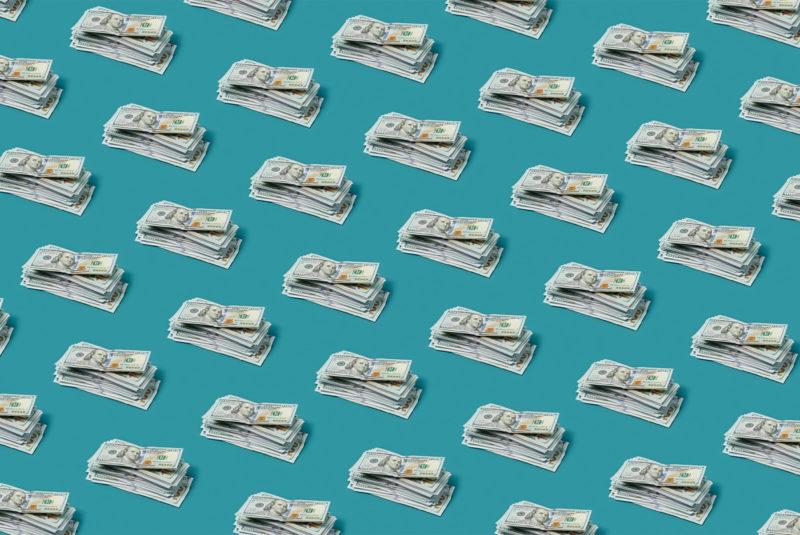Ready To Buy a Home?
Get Approved to Buy a Home
Rocket Mortgage® lets you get to house hunting sooner.
Real estate investment sure sounds great, but everyone has heard a story of someone investing a lot of time and money to earn a very small profit off their investment or rental property. What if there was a way to invest in real estate without all the grunt work?
Enter passive real estate investing.
A hands-off approach to investments, passive real estate investing automates much of the process. You can start building your wealth and assets without having to deal with managing, renovating or repairing a property.
If this approach sounds like a match for you, check out the info we’ve gathered for all the need-to-knows and how-tos.
What Is Passive Real Estate Investing?
Explore Your Mortgage Options
What are you looking to do?
With passive real estate investment, you invest your money into the investment or rental property market but hand off the operational or logistical responsibilities to others. You’re not involved in responsibilities such as collecting rent, renovating or any other physical labor.
Earning passive income means that your benefits and investments are automated. You won’t take an active role in the investment process, but you’ll reap the rewards while somebody else collects rent or repairs broken pipes in the middle of the night.
It’s not quite as simple as putting your cash into a property and letting managers do their thing. With options like crowdfunding, real estate investment trusts (REITs) and real estate funds available, passive real estate investing can take a few different forms.
Once your real estate investments are set up, you can start earning passive income.
Passive vs. Active real estate investing
First, it’s helpful to understand the difference between passive and active real estate investing.
An active real estate investor is usually directly involved with the purchase and management of a rental property or investment property.
For example, an active real estate investor might buy a piece of multifamily real estate, upgrade it, find tenants and carry out responsibilities like organizing the rental agreement, collecting rent and responding to repair requests. Or they might buy an undervalued property, improve it and sell it for a profit.
In contrast, passive investors are silent partners. They invest their money with a group of active investors and let them make the decisions about what properties to buy and how to best manage them to generate a return on the investment.
Because you’re entrusting responsibilities and management to someone else, you don’t get as much say in how the property is managed. However, that also means you don’t need prior experience in real estate investment to start building your wealth.
Types of Passive Real Estate Investments
Passive real estate investments can take on a few shapes and forms. You have a few methods to choose from when you get into passive investing, with most options falling into one of four categories: REITs, real estate funds, crowdfunding and remote ownership. Depending on your investment strategy, each method comes with its advantages, as we’ve outlined below.
REITs
Similar in function to a mutual fund or an exchange-traded fund (ETF), a real estate investment trust (REIT) lets investors buy shares of REITs, and the company manages those funds across a portfolio of properties. At the end of each year, the company pays out profits as shareholder dividends.
As far as investments go, REITs are a pretty safe bet. With minimal effort and an investment as low as $1,000, you can earn passive income. Be aware that you probably won’t see the value grow as rapidly as with other kinds of real estate investments.
Real estate funds
Real estate funds are like a cousin to REITs in terms of function. Real estate funds are like mutual funds that invest in public real estate securities, sometimes including REITs but also occasionally directly into properties.
They don’t provide the same short-term gain as REITs but grow long-term appreciation. Investment professionals manage real estate funds so you won’t have to do as much research. This way, you can get a broad selection and can diversify your real estate investments.
Crowdfunding
Crowdfunding is a popular investment option and works pretty much the way it sounds. An investor or a developer identifies a real estate investment opportunity and then pools the resources and capital of other investors. This allows investors to take on larger opportunities than they could otherwise afford on their own. A downside to real estate crowdfunding is that you usually have to be an accredited investor to take advantage of this option.
It’s a slightly riskier option because you’re investing in a single asset over a shorter term. But it can offer a significant pay-off if the project goes well. To make passive real estate investment extra convenient, there are also some crowdfunding platforms available online that focus exclusively on real estate crowdfunding.
Remote ownership
This option comes the closest to active real estate investment. Referred to as remote ownership, you buy a property and pass all property-related responsibilities and duties off to on-site professionals. This gives you a little more control and involvement over the passive income rental property without taking on the burden of the property’s needs.
To keep up with the property and its on-site managers, most investors use video or phone calls. Some never even see their property for themselves. Remote ownership comes with some risks because you’re relying on property management or contractors and you’re on the line for any direct cash flow needs.
Pros and Cons of Passive Real Estate Investing
Passive real estate investment can be a great way to build your wealth and assets. But like every kind of investment, passive investing carries its pros and cons.
PROS Pros of Passive Real Estate Investing👍
Even if you don’t have a lot of cash of your own to invest, you can pool your funds with crowdfunding or invest in REITs to get a share of the profits.
You won’t need to bring expert-level investment knowledge because REITs, crowdfunding and real estate funds often have professionals who already have the important experience and skills.
Passive real estate investing can offer higher liquidity (making it easier to access your money) than you would get through active investing. You can withdraw money from a REIT or real estate fund on demand.
You get to hand off property-related tasks like collecting rent and managing property taxes to professionals and contractors.
Balances a portfolio with investments divided into separate low- and high-risk assets to help weather market volatility, but maintain growth. Pooling your resources with other investors or buying mutual funds allows you to buy more stable real estate assets than you could afford on your own.
CONS👎
Active real estate investments, such as home flipping, take more work but usually offer higher returns.
Whether you’re handing off work to an investment professional or a property manager, you’ll give them the authority to make decisions on your behalf. Even for a safe investment choice, there’s a chance that one of these professionals could mess up on their end.
It’s hard to say when the market will experience downturns or when company shares will lose value. You could lose some of your principal investment, but you won’t know when it will happen.
3 Steps To Get Started in Passive Real Estate Investing
You can learn how to invest passively in real estate in just a few steps. To get started in your passive real estate investing journey and strategy, see the steps outlined below.
Research and set your goal
Maybe you’re forward-thinking and want to build up your retirement assets, or maybe you want to cushion your monthly take-home with passive income. Either way, clearly define your goal for passive real estate investing and determine how much money you’re willing to put into it.
This will help you build an investment budget with clear direction while accounting for the amount of risk you’re able to take on.
Review your investment profile
Where else is your money currently invested? If you’re aiming for investment diversity, consider whether you’ve geared your current investments toward low or high risk. For example, you might consider a relatively higher risk option, like remote ownership, if your current investments are primarily low risk.
Know how passive you’ll go
Passive real estate investment takes a significant level of comfort and confidence if you’re handing off the bulk of responsibilities and management to others. Ask yourself whether you’re okay with letting go of control over your investments. If you’re less comfortable with the idea, look deeper into how much control and work you want to give to your investments.
Is Passive Real Estate Investing Right for You?
Real estate investing is a lucrative option for building wealth and diversifying your portfolio. It can also come with a lot of work that you might not have the time, energy or motivation for.
Passive real estate investing gives you all of those advantages for much less work. Although you might end up with more modest returns than you would with active investing, you’ll get your foot in the investment door without needing expert-level skills and experience.
Remember that anytime you’re considering new investments or real estate purchases, you’ll need to pay close attention to your finances. When doing underwriting, lenders will take a close look at your financial activity, including your credit score, large purchases or new lines of credit.
Take the first step toward buying a home.
Get approved. See what you qualify for. Start house hunting.
The Short Version
- With passive real estate investment, you invest your money into the investment or rental property market but hand off the operational or logistical responsibilities to others
- Passive real estate investments take a few forms, including crowdfunding, REITs, real estate funds and remote ownership
- Because you’re generating income from money you’ve put into the property without performing extra work, real estate investment is considered a form of passive investment




